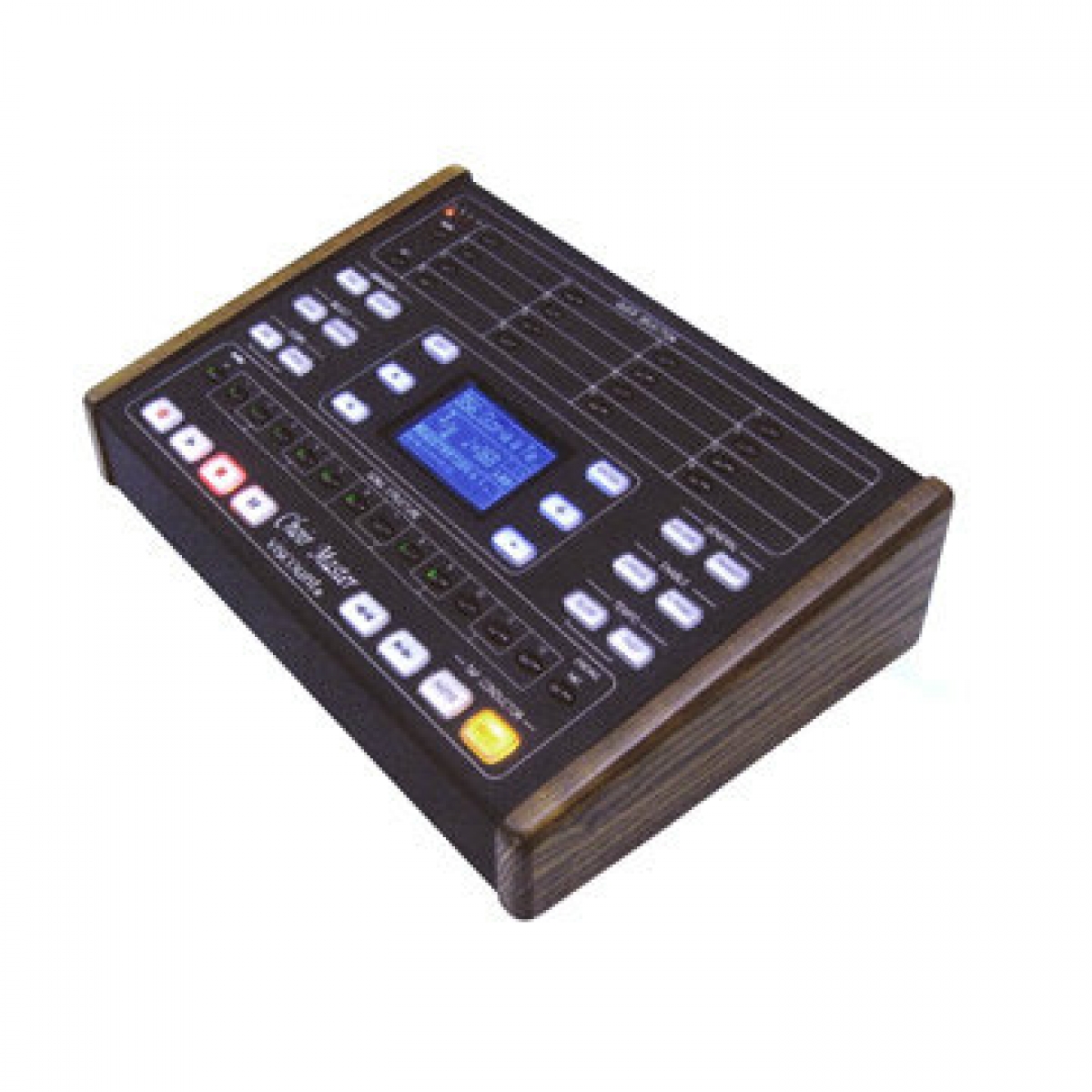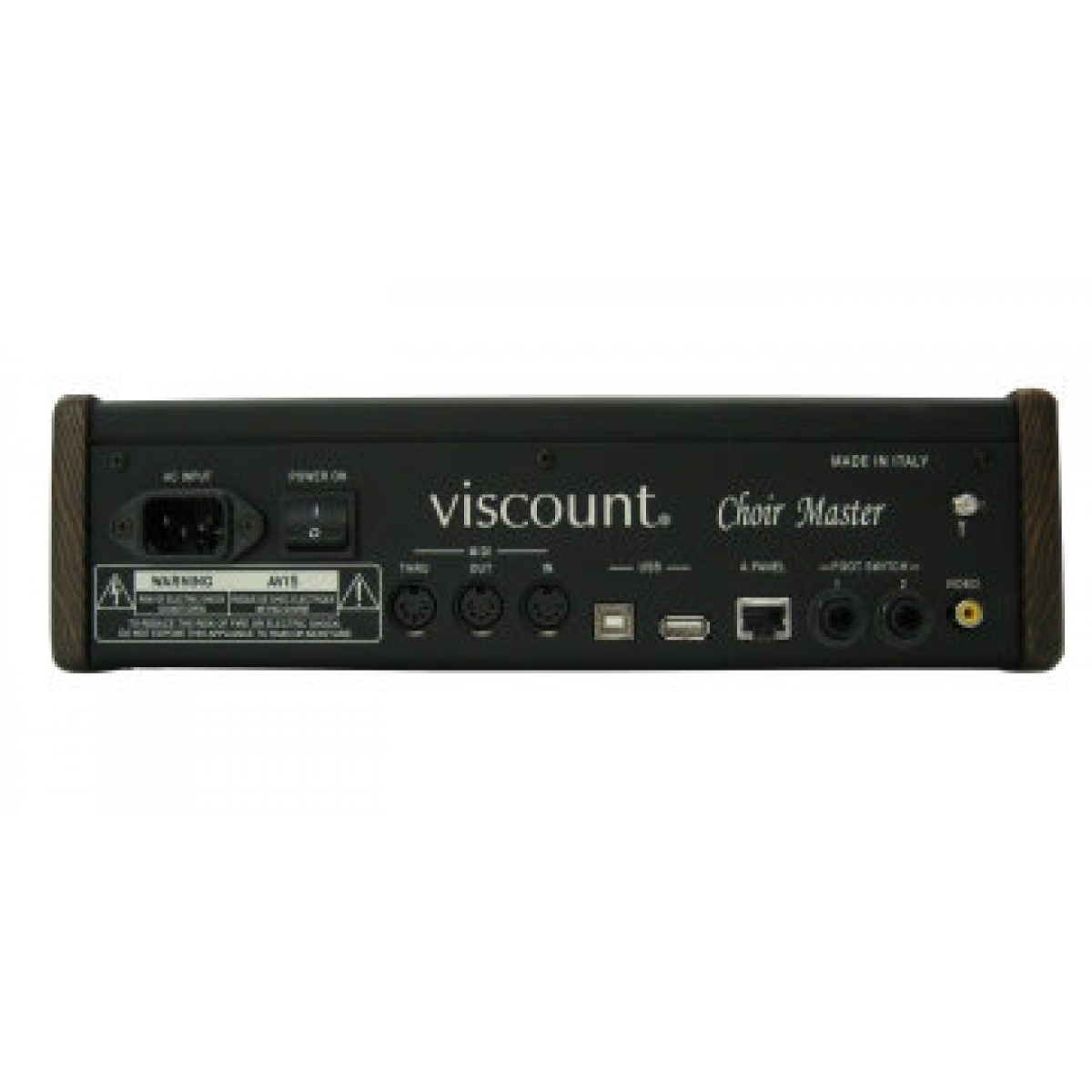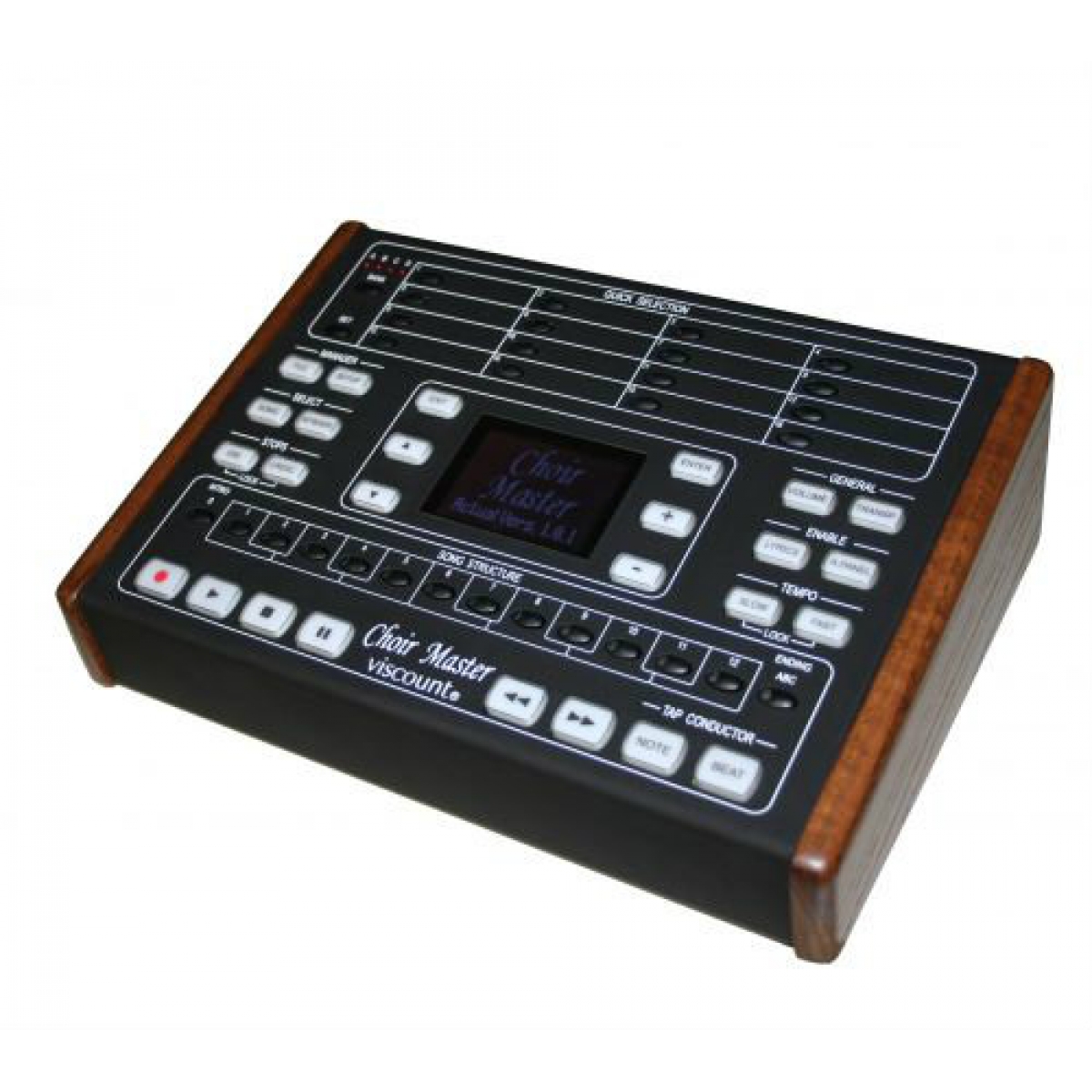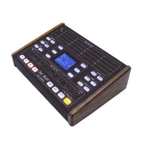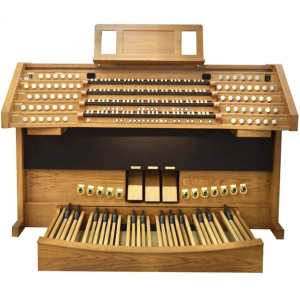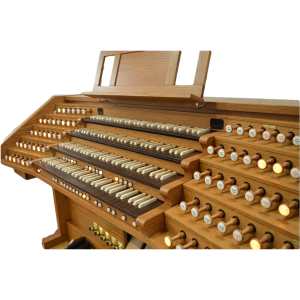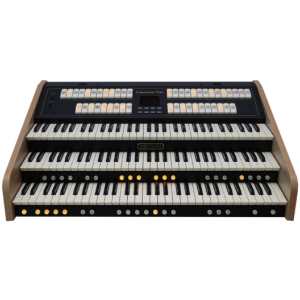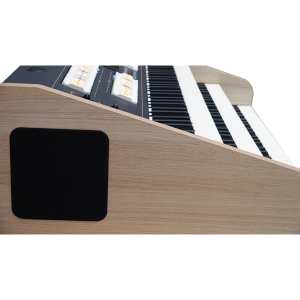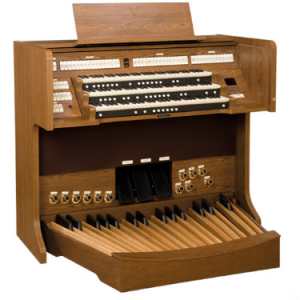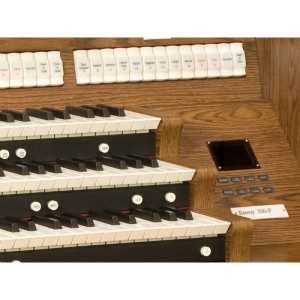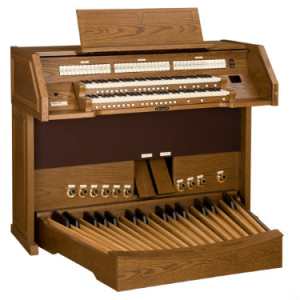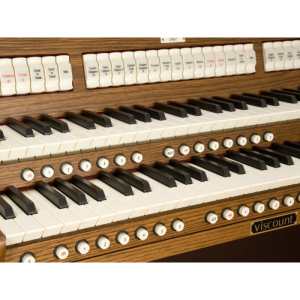The Viscount Choir Master is a new concept instrument intended, mainly, to accompany congregational singing by the organ.
The ideal accessory for any Viscount organ, it:
– can be used also by singers or musicians who can't play an organ;
– displays the song lyrics on a standard TV screen; a cursor indicates the current syllable;
– shows the number (or the page) of the selected hymn, by means of a digital (optional) panel.
Using the [BEAT] and [NOTES] buttons, you can conduct the organ accompaniment by tapping beats or, alternatively, each syllable on the buttons.
The TAP CONDUCTOR, allows a flexibility that automatic background tracks lack.
Thanks to the intelligent lighting of the buttons and a graphical display, Choir Master can be used successfully at the first approach.
Songs can be recalled by typing their code number, or choosing from an alphabetically ordered list. Alternatively, the matrix of small keys, called "Quick Selection", allows you recall, with a single touch, a song pre-assigned to that key.
Smart Hymn Search allows you to select a song by playing a fragment of it on the Song Structure buttons, which, when necessary, coincide with musical keys of the octave.
Using the [DIM.] / [CRESC.] (decreasing / increasing) you can adjust the stops level (i.e. how many stops are used to play a song), while in the "Song Structure" area you can select which parts of the song you wish to perform and which to skip.
Lyrics can be shown not only on the internal display, but also on a TV or a video projector by mean of video coaxial output. An optional three-digit external display shows the number (or page) of the hymn to be performed.
Complete File Manager lets you manage songs and transfer files to and from the USB memory pen.
You can also record your own performances through a simple-approach midi recorder with overdub functions.
Additional Viscount Choir Master Videos
1: The choice of a hymn typing its numerical code
2: The choice of excerpt from a list in alphabetical order
3: The hymn choice using Quick Selection
4: The choice of hymn using Smart Hymn Search
5: The choice of verses to perform
6: The jump to function
7: The VOLUME function
8: The TRANSPOSE function
9: The KEYBOARD function
10: Text visualisation / LYRICS
Songs & Hymns
Songs & Hymns Prepared And Nuilt-in To The Choir Master
|
Readable files format Display Song Selection Tastiera musicale Quick Selection Quick Selection Lock Midi Midi channels Footswitches Transport bar Volume Transposer Song structure controls Tempo controls Tap Conductor Stops controls File Manager Internal memory USB connection Operative system upgrade New songs load Video out Tv system Annunciator Panel Annunciator Panel link Antenna Dimensions Weight |
.mid, .kar, .cms (Choir Master Song) graphical 128×64 pixels 4 ways: Number, Alphabetically ordered list, Quick Selection, Melody 12 keys and 5 octave shift levels for a total of 60 midi keys 16 keys, 4 banks (A, B, C, D); 64 preselected songs yes, to avoid unwanted key content changes In, Out and Thru Rx and Tx channels indipendent for each organ division 2 programmable (1 expression pedal allowed) Play, Stop, Pause, Rec, Fast forward, Rewind 1 – 100 -6 / +5 Intro, Verses (1 – 12), Ending SLOW and FAST BEAT advance, NOTE advance (lyric by lyric) less stops, more stops; general memories Copy, Move, Delete, Rename, Create Directory yes, can contain thousands songs yes by USB pen by USB pen coaxial, to show song lyrics on TV or videoprojector Pal, NTSC optional radio or Midi or serial 485 default 3,1 x 12,2 x 8,3 inch (h x w x d) 6,2 lbs |
Questions & Answers
COMPARISON WITH RD-80
Q.: Can Choir Master replace the RD80?
A.: Of course! Choir Master is much more powerful than RD-80, and has all its functions. However, since it is not equipped with a sound generator, it cannot completely replace RD-80E. Moreover, Choir Master is not equipped with a remote control. In a way, it is a remote control (for the organ) itself.
COMPATIBILITY
Q.: Can I use Choir Master with a non-Viscount organ?
A.: Yes, but those organs cannot benefit from Choir Master 's stops functions. So, in this case, you need to activate manually each register on the organ.
Q.: Can I use Choir Master with a Cantorum series keyboard?
A.: Yes, they are completely compatible; you only need to perform a simple MIDI channel configuration.
Q.: I recorded a song with a MIDI sequencer. Can I use it on my Choir Master ?
A.: Yes, as long as it is a .mid or .kar file.
Q.: I recorded a song with the Unico sequencer. Can I use it on my Choir Master ?
A.: Sure.
6) Q.: Can I create songs on my own, also with lyrics, registration levels, structure data etc.?
A.: Yes, as long as you compile the files following a precise protocol.
FILES AND MEMORY
Q.: What kind of files can Choir Master read?
A.: Midi files (.mid), karaoke (.kar) and .cms proprietary files (i.e. Choir Master Song).
Q.: Which kind of memory units can be used with Choir Master ?
A.: Choir Master is equipped with a USB key reader. It also has a large amount of internal memory, where you can save your own songs.
Q.: Do I need a USB key in order to use Choir Master ?
A.: No; however, in this case, you can only use songs stored in the internal memory.
Q.: How many songs can I save in the internal memory?
A.: Clearly, it depends on the size of each file. In any case more songs than you can possibly need. By that we mean thousands of songs.
CONTROLLING THE VOLUME
Q.: Can I control the volume of the instrument playing the song?
A.: Yes, just press the [VOLUME] button and then use the [+] and [-] buttons beside the screen. In addition, the volume can be controlled through an expression pedal, connected to one of the two footswitch inputs.
TONE TRANSPOSER
Q.: Can I change the key while the song is playing?
A.: Yes, just press the [TRANSP.] button and then use the [+] and [-] buttons beside the screen. If the transposition value is not 0, the [TRANSP.] button turns red.
ANNUNCIATOR PANEL
Q.: How do I use the Annunciator Panel to show the song's digits?
A.: Press the [A-PANEL] button. This will work as long as the filename of the song begins with three digits and an underscore (“_”). Otherwise the Annunciator Panel cannot work properly and the [A.PANEL] button becomes yellow.
Q.: How can I connect the Annunciator Panel to Choir Master ?
A.: In three different ways: by cable through RS-485 serial connector; through Midi port; by radio signal (wireless), using the internal transmitter. To enable a radio connection, first install the antenna on the back of Choir Master.
Q.: Can I use the panel to show any other number that is not in the filename (e.g. the booklet page on which the lyrics are printed.)?
A.: Yes, you only need to press and hold the [A.PANEL] button and then insert the digits through the Song Structure buttons. Then the digits will appear on the panel; the [A.PANEL] button will glow red, meaning that the number shown on screen has been entered manually. This number will be shown until the [A.PANEL] button is pressed again.
Q.: Can I use the panel to show a number that is not in the filename?
A.: Yes, just follow the procedure explained at point 15.
LYRICS
Q.: I want to see the song lyrics on the internal display. How can I do that?
A.: By pressing the [LYRICS] button. If the current song has no lyrics, the button will glow yellow. If you load a song with lyrics, the button will glow green.
Q.: Is there any way to show the song lyrics, other than the internal display?
A.: Yes, just connect a TV screen or a video projector to Choir Master and select the proper video input.
Q.: Can I increase the size of the lyrics?
A.: No, but you can type the all the lyrics in upper case to make them easier to read. At any rate, it is important to choose a TV screen of the appropriate size for the context.
PLAYING SPEED
Q.: Can I adjust the playing speed?
A.: Yes, by pressing the [SLOW] and [FAST] buttons; on the Main Page you will see the tempo percentage (i.e. the difference from the standard tempo).
Q.: Why is the [SLOW] button glowing green?
A.: Because the percentage tempo is lower than 100%. Should it be higher than the standard value, the [FAST] button will glow green instead. If none of the two buttons glow, the tempo percentage is exactly 100%.
Q.: Can I prevent the song from changing tempo, except when I adjust it manually?
A.: Yes; press the [SLOW] and [FAST] buttons at the same time. The buttons will glow red, to show that the tempo has been locked in the current value. This is called "Tempo lock" mode. On the main screen you will see a small lock near the tempo value. To return to normal mode, press again [SLOW] and [FAST] at the same time.
Q.: Can I restore quickly the original tempo?
A.: Yes, just press [SLOW] and [FAST] together for a short while. This will also unlock the tempo.
SELECT [SONG]
Q.: The name of the file/directory is too long for the display. How can I read the whole name?
A.: By pressing the [+] button. The name of the file/directory currently highlighted by the cursor will appear in its entirety.
[KEYBOARD]
Q.: I need to listen to the first note of a song I am going to play; can I play it through Choir Master ,without using my organ keyboard?
A.: Yes, just press the [KEYBOARD] button while on the Main Page. The SONG STRUCTURE buttons can then be played as 12 keys of a keyboard. The leds and the white outline on the Choir Master panel highlight this function. The buttons on the sides, INTRO and ENDING, transpose the keyboard pitch from -2 to +2 octaves. If both buttons are off, the keyobard is set on the central octave.
Q.: When I press the [KEYBOARD] button, one of the SONG STRUCTURE buttons turns red and two others green. Why is that?
A.: When the loaded song contains information about its tonality, the red button indicates the root note of the tonality. The green buttons indicate mediant and dominant (third and fifth).
Q.: Do the root note indicators move when applying a transposition?
A.: Yes, they move correctly, according to the transposition.
QUICK SELECTION
Q.: What is the purpose of the sixteen Quick Selection buttons?
A.: Each button – when pressed – recalls a song. The song is saved along with its song structure configuration (i.e. active strophes), stops and transposition.
Q.: How do I save a song in a Quick Selection slot?
A.: Not much different from the way register combinations are saved on an organ; first, press the (SET) button; while holding it, select one of the 16 Quick Selection buttons, in which the song will be stored. Then, while still pressing the (SET) button, press again the chosen Quick Selection button to confirm your choice.
Q.: When I press the (SET) button some buttons glow red. Why is that?
A.: The red buttons are in "lock" mode, and therefore their content cannot be overwritten. This is to prevent other users from modifying your Quick Selection settings.
Q.: Left from the Quick Selection area there is a "BANK" button, with four leds above it, named A, B, C and D. What is their purpose?
A.: Each loading and saving operation takes place in one of the four memory banks. The led indicates the memory bank currently in use. Press [BANK] to switch between memory banks. Since each memory bank has 16 Quick Selection slot, there are 64 Quick selection slots in total.
SONG STRUCTURE
Q.: While playing a song, one of the Song Structure buttons blinks. Why is that?
A.: The blinking button corresponds to the song section currently played.
Q.: At times, no button blinks, although a song is being played. Why is that?
A.: This happens while playing the first chorus, as it does not correspond to any led.
Q.: Can I skip back and forth to a different strophe?
A.: Yes. Just press for a short while a song structure button to skip to that part of the song, even while playing it.
MAIN PAGE
Q.: The song name is too long for the screen and I cannot read it. How can I read the whole name?
A.: Press [ENTER] to show the whole title and further information, such as tonality and copyright notes. If the text is still too long for the screen, use the arrow buttons to scroll it. Also, you can adjust the font size using the [+] and [-] buttons.
Q.: Can I see the music score of the song?
A.: Choir Master can show a sort of stenographic score on the main page. It contains the main elements and can be used to "direct" a song. By pressing [+], notes will appear instead of tempo and time signature. Each note stands for a beat in the music bar. Their shape represents the duration of each beat. While playing, an advancing bar shows the exact time position at any moment.
Q.: When the symbolic score is active, some "x" shaped symbols appear on the screen. What do they mean?
A.: They represent the notes of the melody. In fact, they stand on different levels. Their vertical position indicates their pitch, and the horizontal position represents their time position inside the music bar.
Q.: How do I know which notes do they represent?
A.: Press [+] again: the “x” shaped symbols will turn into syllables of the solmisation system (such as Do, Re, Mi etc.); press [+] once more to translate them into the english alfphabetical system (A, B, C, D, E and F). When applying a transposition, the notes vary accordingly, except in the case solmisation, since a transposer does not affect the note name.
Q.: How can I switch between visualisation modes?
A.: By pressing [+] and [-]. Press [EXIT] to return to the Main Page. Visualisation modes are: Main Page, Symbolic Melody score, Solmisation Syllables and Absolute Keys.
TAP CONDUCTOR
Q.: What is the purpose of the [BEAT] and [NOTE] buttons?
A.: These buttons are linked to one of the main Choir Master 's features: the tap conductor function. This function is best used with the melody score mode.
Q.: How can I conduct the chorus if I have to tap the tempo on the Choir Master at the same time?
A.: You can connect a pedal to Choir Master . For example, you can assign one pedal to the [BEAT] function and one to the [PAUSE] function. This way you can control the base and conduct the choir with your hands at the same time.
Q.: The tempo value disappeared and the words "Cantus Planus" appeared instead. At the same time the [BEAT] button is not working anymore. Why is that?
A.: Some songs, such as Gregorian chant, are not based on repetition of beats; they are structured as a series of syllables. In this kind of music, there are no measures or repeated "beats" that one can tap on the [BEAT] button.
Q.: There are vertical lines on the advancement bar. Why is that?
A.: Because in that spot the song has been sped up by skipping a portion of beat. On the contrary, when slowing down a song, the TAP CONDUCTOR button turns yellow, so as to signal that the song has been temporarily paused, waiting for the next tap.
Q.: I need to restore the original tempo after a rallentando. Can I do that?
A.: Yes. Press one of the TAP CONDUCTOR buttons for a moment to restore immediately the default tempo. So, when playing a fermata, press the button for a moment. The "right tempo" will be restored.
Q.: Can I create a small pause between one phrase and the other, if such pause is not in the recorded base?
A.: Of course. Just press the [PAUSE] button and then resume when you wish.
STOPS
Q.: What is the meaning of the acronyms in the "registration" field?
A.: They represent the active stops of the organ manuals. F stands for flutes and bourdons, P for principals, Mix for mixtures, R for reeds. The same stops are active on the pedalboard, but one octave below (8' Flutes on the manuals become Sub Bass 16' on pedalboard, 4' Principals become 8' and so on).
Q.: Can I use fixed combinations instead of Registration levels?
A.: Yes. Just press the [θ] button on the Main Page to switch to combinations. Each combination has a name describing it. To activate a combination press [DIM.] and [CRESC.] together. The buttons will stop blinking and turn red. To return to the normal Registration (or Stops) mode, press [π].
Q.: Sometimes Registration levels change automatically without my consent. How can I prevent that?
A.: Just press [DIM.] and [CRESC.] at the same time. They become red, symbolising the "lock" mode, and your stops will not be subject to change. To unlock the stops, just press again the two buttons at the same time.
Q.: I modified the registers of a song but I want to restore the default settings. How can I do that? Do I need to reload the song?
A.: No; just press the [DIM.] and [CRESC.] buttons at the same time for a short while. The default stops for that song will be restored.
Q.: When playing a song recorded on a Viscount organ, the "Registration" field is called "Stops" instead. Why is that?
A.: When stops are saved one by one and not as "Registration levels", they are also managed one by one. It is therefore impossible to assign levels, as in songs provided with registration levels. However, thanks to a powerful algorithm created for Choir Master, the [DIM.] and [CRESC.] still work properly. Moreover, it is still possible to restore the default stops (see question 49) and to lock them (see question 48).
Call Promenade Music on 01524 410202 for more information
